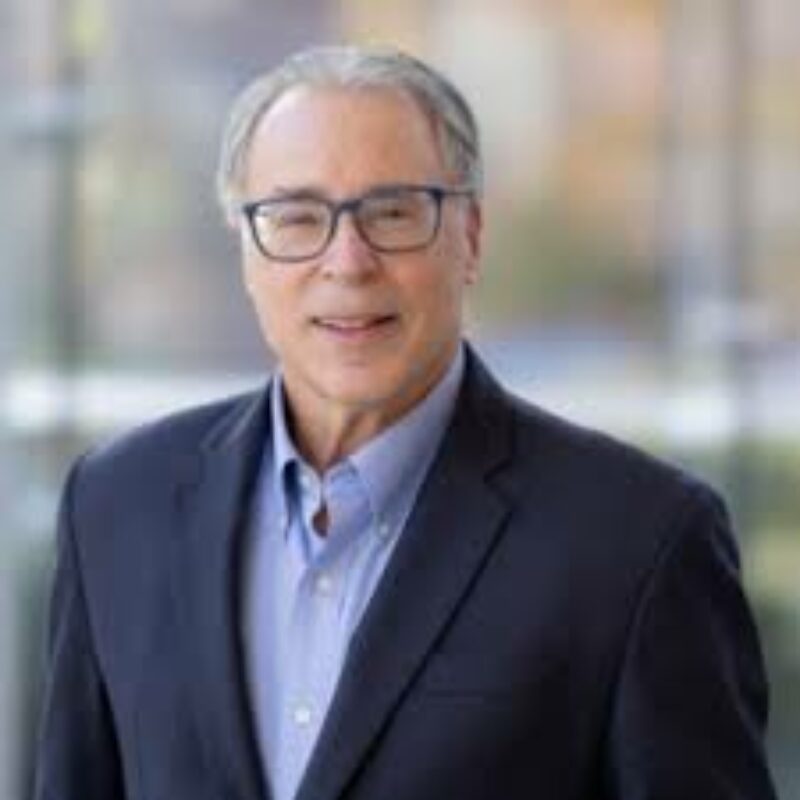Centenarians
LESSONS FROM CENTENARIANS

LESSONS FROM CENTENARIANS
CENTENARIANS ARE CONSIDERED THE MOST SUCCESFUL HUMAN BIOLOGICAL AGING MODEL
Centenarians are remarkable not only because of their prolonged life, but also because they compress morbidity until the very last moments of their lives, thus being proposed as a model of successful, extraordinary ageing. From the medical viewpoint, centenarians do not escape the physiological decline or the age-related diseases or syndromes (i.e. frailty), but the rate of such processes is slow enough to be counterbalanced by their increased intrinsic capacity to respond to minor stresses of daily life (i.e. resilience).
Allostatic stresses lead to a chronic low-grade inflammation that has led to the proposal of the “inflammaging” theory of ageing and frailty. The Biology of Centenarians, provides us with clues for intervention to promote Healthy Ageing in the general population. One of the major reasons for this healthy ageing has to do with the genetic signature that is specific for centenarians.
The number of centenarians around the world rose from 151,000 in 2000 to 573,000 in 2021. People are living longer, and we can expect to see more people reach 100 in the years to come.
HERE ARE FOUR KEY FACTORS THAT CONTRIBUTE TO EXTREME LONGEVITY
Centenarians and near-centenarians typically had a balanced and diverse diet. We found, on average, they consumed between 57% and 65% of their energy intake from carbohydrates, 12% to 32% from protein, and 27% to 31% from fat. Their diets included staple foods (such as rice and wheat), fruits, vegetables, and protein-rich foods like poultry, fish and legumes, with moderate red meat consumption.
This dietary pattern, similar to the Mediterranean diet, is linked to lower risks of physical function impairment and death.
Most centenarians also preferred a low-salt diet. While only one study in our review measured the mean daily sodium intake, finding 1.6 grams, this was within the World Health Organization’s recommendation of less than 2g of sodium per day (equivalent to about 5g of salt). The traditional Okinawan diet, known for its consumption by Japanese centenarians on Okinawa Island, contains an estimated 1.1g of sodium.
We found higher salt intake (those who preferred salty food or added extra salt to meals) had a 3.6-fold increased risk of physical function impairment compared to those without a preference for salt.
Practically, these findings suggest we should include plenty of wholegrains, root vegetables, beans, legumes, fruits and vegetables in our diet, minimise red meat consumption and opt for lean poultry, fish, and plant-based protein, and monitor salt in our food.
Centenarians are not free from chronic conditions but typically develop them much later than average adults. More than half of the people in our review experienced common issues such as hypertension (high blood pressure), dementia, or cognitive impairment.
We found people in our review took an average of 4.6 medications. The most frequently used medications included blood pressure medications and drugs for heart disease. This is similar to the results of a large health register-based study in Spain, which found centenarians took an average of 4.9 medications. Non-centenarians in this study took 6.7 medications on average.
The fact centenarians appear to take fewer medications may indicate better health with fewer medical conditions. However, data on medication use is often self-reported and so may not be entirely accurate, especially among those with cognitive impairment.
Polypharmacy is often defined as taking five or more medications simultaneously, and is common in older adults. Inappropriate polypharmacy is associated with increased risks of adverse events such as falls, cognitive impairment and hospitalisation, due to harmful drug interactions.
While the type or number of prescribed medications may not be within a patient’s control, it’s important for doctors to prescribe medications only when necessary, fully inform patients about benefits and risks, and regularly review treatment plans.
Sleep quality and quantity affect the immune system, stress hormones, and cardiometabolic functions such as obesity, high blood pressure, and diabetes. Good sleep is associated with extended years of good health and reduced risks of chronic diseases.
In our review, 68% of the centenarians were satisfied with their sleep quality. In a survey of adults’ sleep satisfaction in 13 countries in 2020, sleep satisfaction ranged from 29% to 67%.
The optimal sleep duration is between seven and eight hours per night. Tips to achieving better sleep include keeping a regular sleep routine, creating a restful environment, exercising regularly and managing stress.
More than 75% of the centenarians and near-centenarians in our review lived in rural areas. This is a pattern reflected in “blue zones”, areas known for high concentrations of centenarians, such as Okinawa in Japan, Sardinia in Italy, the Nicoya Peninsula in Costa Rica, and Ikaria in Greece.
This may be partly related to the connection between nature and health and wellbeing. For example, exposure to green space has been associated with lower stress, depression, blood pressure, type 2 diabetes and heart disease, potentially increasing life expectancy.
We didn’t look at all lifestyle factors associated with longevity in our review. Research also shows not smoking, avoiding alcohol or drinking moderately, staying physically active and maintaining social connections are important for boosting a person’s chances of living to 100.
Of course, adopting the lifestyle changes discussed in this article won’t guarantee you’ll reach the ripe old age of 100. And on the flip side, some centenarians have shared questionable health habits.
But many older adults are seeking to adopt healthier lifestyles to prevent and manage chronic conditions, while health-care professionals are similarly recognising the value of lifestyle medicine.
The earlier you can adopt positive lifestyle changes and healthier habits, the better placed you’ll be to achieve a long and healthy life. Becoming a centenarian is a lifelong endeavour.

American Federation of Aging Research – AFAR – Scientific Director
Director – Einstein-Institute for Aging Research
Director – Nathan Shock Center for the Excellence in the Basic Biology of Aging
Professor of Medicine and Genetics at Albert Einstein – College of Medicine
Dr. Nir Barzilai’s research explores the genetics and biology of aging through the lens of exceptional longevity. The recipient of multiple grants from AFAR and major scientific foundations including the NIA, and author of some hundred publications, Dr. Barzilai is a pioneer in the study of Centenarians and how their genes can point to opportunities to delay aging or protect against age-related disease.
One of the leading voices on healthy aging in popular media—as seen on PBS, National Geographic Channel, the Today Show, and TED Talks and in the Wall Street Journal, WIRED, The New York Times, and more—Dr. Barzilai recently published his first book, Age Later: Health span, Life span, and The New Science of Longevity (St. Martin’s Press.)
What are SuperAgers and what does the study of these individuals tell you about longevity?
SuperAgers are people who have aged more slowly than others. In other words, SuperAgers’ chronological age does not reflect their biological age. They do not accumulate age-related disease and require treatment, which allows them to work longer, enjoy post-retirement interests, to live life to the fullest.
In my studies, not only did SuperAgers live 20-30 more Healthy Years, but also had a Contraction of Morbidity. This means they spent less time being sick and therefore there is a ‘longevity dividend’ among SuperAgers as medical costs are saved.
How can your study of genes in centenarians or their offspring translate to drug discovery efforts?
The interesting thing about discovering specific changes in the genes of centenarians and their offspring is that those genes can point to a mechanism that can be targeted for intervention. We can look to these mechanisms for developing drugs that inhibit or stimulate these genes.
Through the Longevity Genes Project at Einstein, we have found two such changes in genes that control the good aspect of lipid metabolism. These discoveries led to the development of a drug and successful Phase 2 studies by the pharmaceutical companies Merck and Ionis. The indications for the development of these drugs was cardiovascular disease, but they may impact other diseases as well.
The disproportionate impact of COVID-19 on older adults has been well documented, but what can be learned from older adults, even centenarians, who survive the virus?
Centenarians, as well as many older adults, do survive COVID-19. While we must be sensitive to the range of socioeconomic factors impact how and who COVID-19 is affecting in America, it’s important to look at the “Hallmarks of Aging”–on a cellular level, these “hallmarks” are processes that are considered to be the core underlying machinery controlling how our bodies age. COVID-19 vulnerability is linked to two of the hallmarks of aging: immune decline and inflammation. Some older adults experience these hallmarks at lower levels. Further, research has shown that immunity among offspring of centenarians is better than that of their age-matched control. Because all hallmarks of aging are involved, not just the immune system, these individuals are able to survive through a severe disease like COVID-19.
You recently published a book “Age Later: Health Span, Life Span, and the New Science of Longevity” where you pose the question: “Is it possible to grow older without getting sicker?” How have your thoughts on this question changed since the coronavirus pandemic?
COVID-19 has put a spotlight on how the biology of aging makes some of us more or less vulnerable to viruses and sickness. The field of aging research has been looking at this for decades, and now we can apply our expertise to COVID-19 and expand the conversation on targeting age-related diseases and extending healthspan—our years of health as we age.
I always say that a future of healthy aging is not just a hope, but a promise: not only have we gone from the promise of targeting aging, but there are drugs that can do this in use by humans today! Those drugs can change biological age and improve immunity—not only against COVID-19 but against the next pathogen.
For example, Metformin is a drug that can target aging in humans. There are several papers that show COVID-19 patients on metformin were hospitalized less and had lower mortality than patients with similar problems who were not treated with metformin. We need to move rapidly to consider available drugs like this that can help defend older adults against threats like COVID-19 now and those in the future.
This also why we need the TAME (Targeting Aging with Metformin) Trial, which aims to provide proof of concept that aging can be targeted and treated. At 14 leading research institutions across the country, we hope to engage over 3,000 individuals between the ages of 65-79 to test
test whether those taking metformin experience delayed development or progression of age-related chronic diseases—such as heart disease, cancer, and dementia. The TAME Trial seeks an indication for aging from the FDA, and this would open the door to so many promising therapies to extend health.
As the co-founder of biotech firms — CohBar and Lifebiosciences — who are developing new therapies to extend health by targeting aging, naturally I’m excited by this prospect. And I’m proud to be the TAME Trial’s principal investigator, working with a committee of leaders in the field at major research institutions.
I’m passionate about the therapeutics that are within our reach and their promise to extend health as we grow older. My book may be called “Age Later”, but it really could be called “Healthier Longer.” The promise that we all can live healthier for longer as we grow older and decrease the pain of disease and illness is really what motivates me and my inspiring colleagues in the field.
Centenarians, individuals who live to be 100 years or older, represent a growing and increasingly studied demographic that offers unique insights into healthy aging and longevity. Unlike the general population, many centenarians delay or altogether avoid age-related diseases until the final years or even months of life—a phenomenon known as the *compression of morbidity*. Dr. Nir Barzilai, a prominent gerontologist and director of the Institute for Aging Research at the Albert Einstein College of Medicine, has led pioneering studies on the genetics and biology of aging in centenarians. His findings suggest that exceptional longevity is not merely an extension of average lifespan but is associated with a biological resistance to age-related decline and chronic disease. This overview explores the epidemiological profile, genetic factors, lifestyle habits, and biomedical mechanisms that contribute to longevity and morbidity compression in centenarians, with particular emphasis on Barzilai’s work with the Longevity Genes Project.
Centenarians are a unique demographic whose study sheds light on human longevity and age-related resilience. Their increasing numbers, particularly in developed nations, reflect advances in medicine, public health, and social conditions. However, what sets centenarians apart is not just their age but their health trajectories—often characterized by delayed onset of diseases like cancer, cardiovascular disease, and neurodegenerative disorders.
Coined by James Fries in the 1980s, *compression of morbidity* refers to the shortening of the time a person spends suffering from age-related diseases and disability. Dr. Nir Barzilai’s studies on centenarians affirm this model, showing that many individuals in this group remain physically and cognitively robust well into their 90s, with rapid declines only in the final months of life.
Barzilai’s work reveals that centenarians frequently:
Barzilai’s Longevity Genes Project has identified several genetic variants more common among centenarians, including:
CETP gene variants: associated with larger HDL (“good cholesterol”) particles
FOXO3A: a gene linked to insulin sensitivity and stress resistance
APOE2 allele: a protective variant associated with lower risk of Alzheimer’s disease
These genes influence pathways that regulate metabolism, repair mechanisms, and resistance to cellular stress.
While genetics play a major role, Barzilai emphasizes that centenarians often follow surprisingly varied diets, exercise habits, and lifestyles—suggesting that intrinsic biological factors may outweigh lifestyle in extreme longevity. That said, many do share behavioral traits such as:
Understanding why centenarians compress morbidity has broad implications. If researchers can mimic these mechanisms pharmacologically or via lifestyle interventions, it may be possible to extend healthy lifespan in the general population. Barzilai’s ongoing work on *metformin* and other geroprotectors aims to translate insights from centenarians into therapies that target aging itself.
1. Barzilai, N., et al. (2003). *Unique lipoprotein phenotype and genotype associated with exceptional longevity*. JAMA, 290(15), 2030–2040.
2. Barzilai, N., et al. (2008). *Genetic determinants of exceptional longevity*. Mechanisms of Ageing and Development, 129(11), 588–591.
3. Barzilai, N., & Cuervo, A. M. (2012). *Aging as a biological target for prevention and therapy*. JAMA, 308(24), 2474–2475.
4. Sebastiani, P., et al. (2010). *Genetic signatures of exceptional longevity in humans*. Science, 330(6004), 294–298.
5. Fries, J. F. (1980). *Aging, natural death, and the compression of morbidity*. New England Journal of Medicine, 303(3), 130–135.
6. Milman, S., & Barzilai, N. (2015). *Aging and longevity in humans: Genetics and mechanisms*. Nature Reviews Genetics, 16(8), 512–523.
LEADERSHIP FOR EXPLORING SUSTAINABLE HEALTH
“360º NEXT GENERATION SUSTAINABLE VALUE-BASED LIFECARE POWERED BY NEW INNOVATIONS AND NEW TECHNOLOGIES AND THE SUPER-CONVERGENCE IN MEDICINE AND HEALTH SCIENCES NAVIGATING US TOGETHER TOWARDS A SUSTAINABLE HEALTH INDUSTRY”
OUR ALLIES
